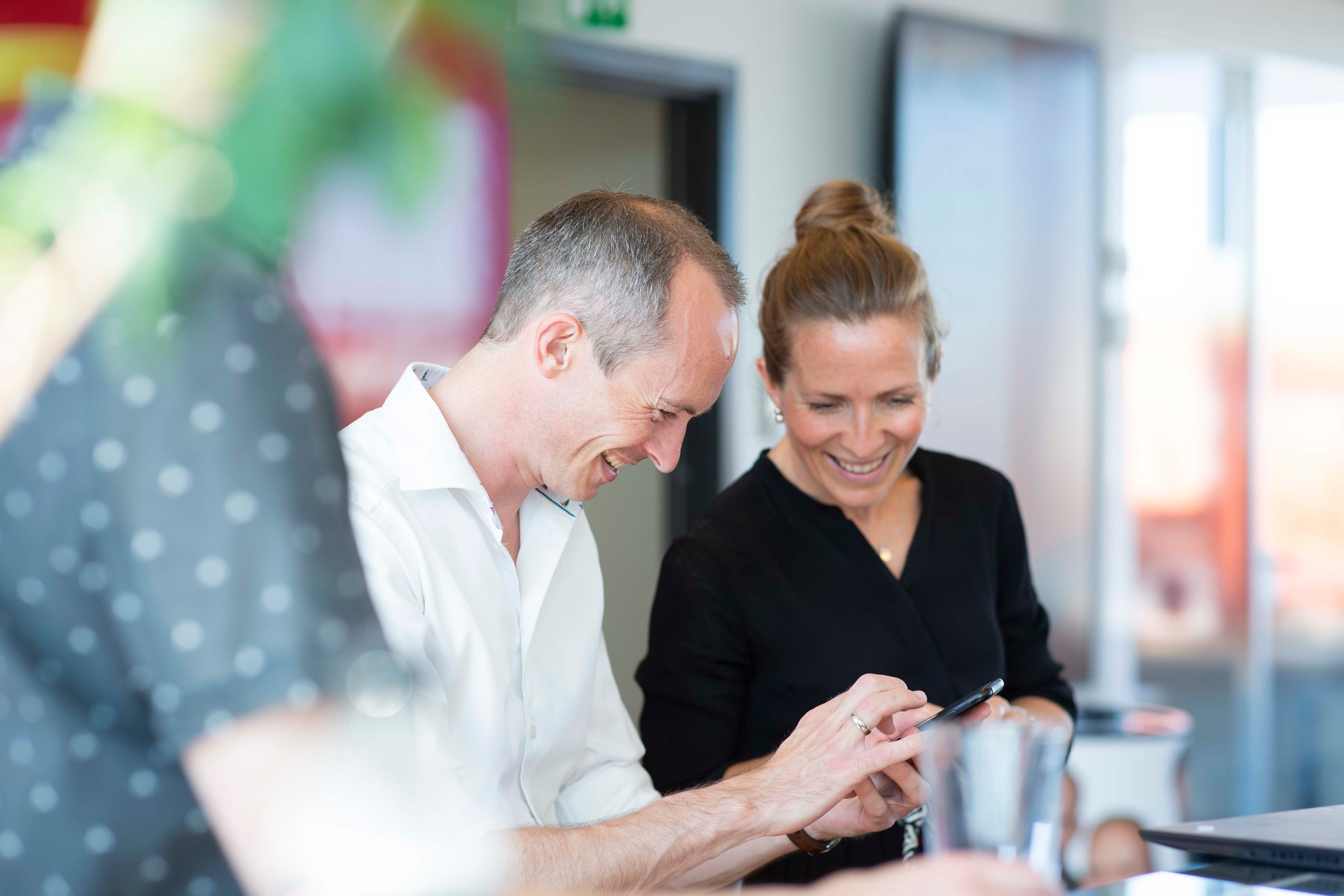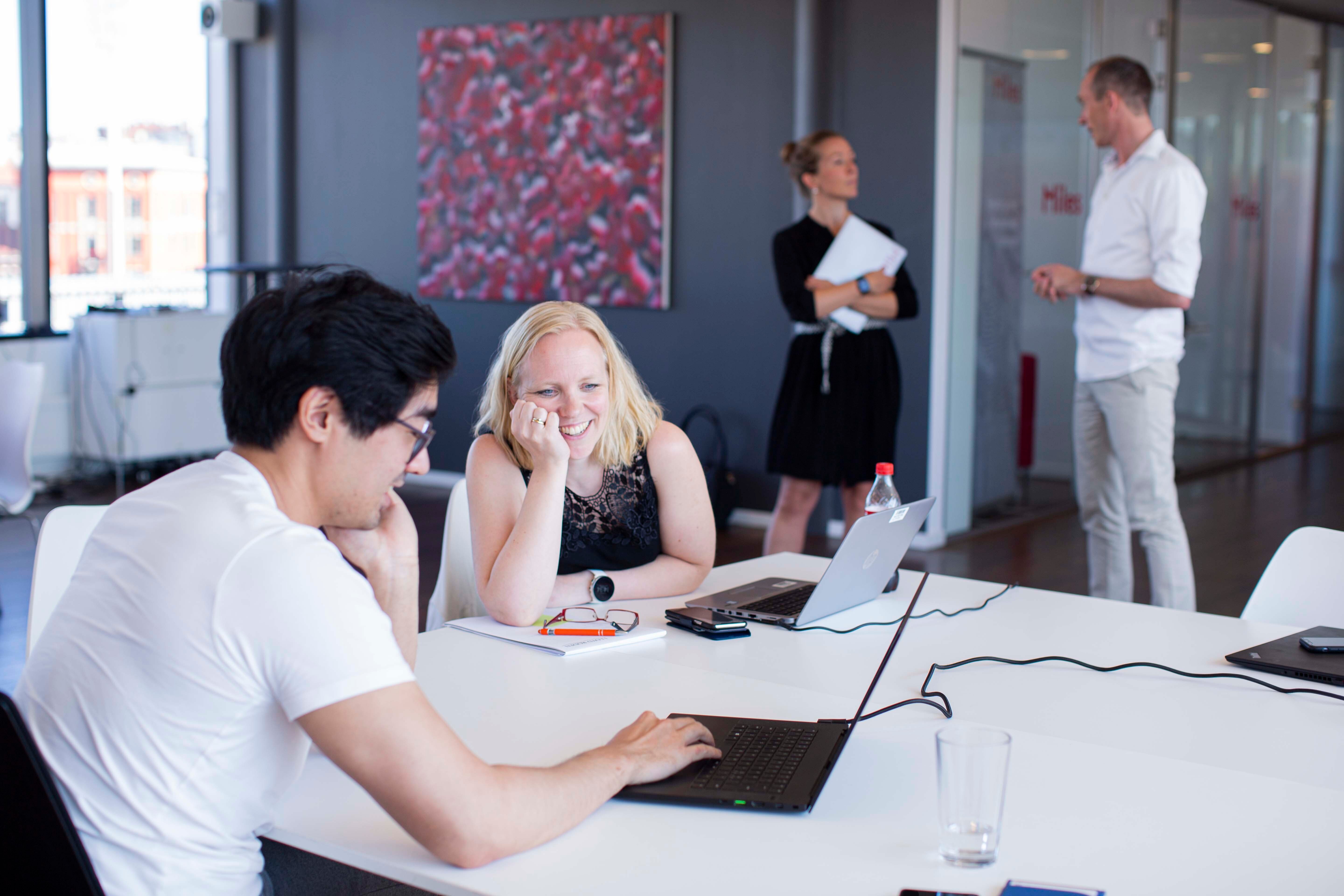Imagine that you are working on your strategy going forward. You know that this is important. It will affect many people. So naturally you engage in the task with great determination. Of course you don't do it alone - after all you are an inclusive leader. You involve many of your trusted advisors and co-workers. You listen to them and take their thoughts into account. You gather all the material into a presentation and form the makings of a strategy there.
It's still early on in the process and you want more input and feedback based on what you have gathered so far. So you show the presentation in a meeting with many of your co-workers present. The feedback you get is not what you expected. You get some input on font and colour, but not a lot regarding the strategy itself.
What has changed? When you talked to people earlier they had lots of input. You take some time to reflect: “Why are people not engaged?” “Why will they not give feedback?” I mean, you did involve them properly and took their thoughts into account. You did allow for them to help mold the way forward. Didn't you?
The notion of top-down management with a group of people telling others what to do is slowly becoming abundant. Autonomy and co-leadership is becoming increasingly more relevant. As we have heard so many times, this calls for a different kind of leadership. But what does that really mean? And how do you do it?
Let's direct our thoughts back to your work on the strategy. It's not like you went for the top-down approach and took the management group on an off-site, decided on a strategy, presented it in an all-hands meeting and told everyone to get with the program. You involved and engaged many people along the way. Still, there is a leap from involvement to co-creation. You need to do more than involve people to engage, you need to invite them as equal partners in the process.
When we co-create we discover new ways of thinking. The meaning of the word is “making something together”. We can use it internally to co-create our organization and we can use it externally to co-create new products and services. It is a powerful capability that enables product and organizational innovation. Especially intriguing is how it can lead to a people-oriented culture motivated for change.
We are constantly reminded that change is inevitable and that our surroundings are changing more rapidly than ever. The previous year being living proof of this. How you approach change will affect how people respond. Do you implement a change top-down, do you involve people in the change or do you design the change journey together? Whether people support and engage in your change is largely dependent on your approach and co-creation is a capability that can help you create engagement and ownership.
One of the things that are changing is the degree of autonomy in our work. We expect more autonomy - as people and in teams. When we start exploring team autonomy we are often faced with the challenge of setting common goals to guide these teams. And we want to make sure our efforts are directed towards that common goal. By co-creating these goals you enable ownership, understanding and resilience over time.
As an advocate for an Agile way of work I have always encouraged and sought co-creation, without being aware that it's “a thing”. It lies inherently as a natural part of the way you work when you are becoming Agile. The Manifesto for Agile Software Development says to value “individuals and interactions over processes and tools”.
To me co-creation is about people. About involving and engaging. -And the recognition that we create more value when we think together. I believe that we discover new and better ways when we co-create our process, our product and our culture. That we should let go and trust that the collective wisdom is more powerful than the wisdom of a few.

If it is so powerful we should do it everywhere all the time, right? Well, no. In the neverending search for the silver bullet, I'm sorry to say that co-creation is not one either. This is not a capability that can be built out of thin air. To reap the benefits you need to build on a foundation of trust, transparency and psychological safety.
To be able to truly co-create you need to feel safe to voice your opinions. You have to trust and be trusted. You will challenge the traditional hierarchy and shorten the distance from top to bottom, which in turn requires a culture that allows for rapid feedback loops and transparency.
Co-creation is one of the capabilities you need in your organisation and you have to know how and when to apply it. Co-creation involves many people over time, which takes time. So if time is of the essence, you might want to go with another decision making approach. And it's probably not wise to co-create all decisions all the time. -But I do think we could all benefit from a higher degree of co-creation to create engagement, alignment and change that sticks.
Where I work we take our pride in keeping our BMI (Bureaucratic Mass Index) low. We have a quite flat culture based on trust. When we describe our culture we often refer to our DNA which consists of our vision, our values and our leadership philosophy. This is our backbone and everything we do is rooted in this. Still, even with such a solid foundation it is easy to fall into the trap of becoming static and change averse.
That's why we have arenas that allow us to co-create our strategy and culture. Examples of such arenas are our DNA-forum, weekly Lean Coffee and open strategy workshops.
Our DNA gives us a direction and some ground rules. What we co-create is how we use these ground rules to get to where we want. So when we discuss in our weekly Lean Coffees or quarterly DNA-forums it is not about changing or adding to our two values “professional authority” and “warmth”. It's about how we use these values in our everyday lives.

And when we co-create our strategy it's not about changing the direction, it's about how we get there. I remember my first encounter with this in Miles. I had just started and the theme of one of our social gatherings was strategy. We all discussed, thought and ideated together as equals. I still remember the feeling; at first a little bit perplexed and wondering whether this was just an act, but soon realizing that this was for real and it made me feel motivated and empowered.
When we dare to co-create we reach better outcomes, the ownership is rooted within the participants and we build a common understanding.
Let's direct our attention to your strategy work one last time. After your round of reflection you decide that you want to take the leap from involvement to co-creation. But how do you do that? Here are 5 tips to get you started:
- First, check in on your intent. Are you prepared to discover new ways that differ from what you originally believed? Are you prepared to throw away your own ideas? If you're not really there yet it might be better to practice on something less critical first. It's better to involve in an honest way than to fake co-creation. So if you are a bit hesitant, jump ahead to tip number 5.
- If your heart's in it the next thing is to define your process to engage people. Make sure to identify and invite all stakeholders. Communicate why, how and when you will ideate. Explore together and dare to keep it open for quite some time. Be clear on how and when to make decisions.
- Allow for thinking to emerge also in between the touch points of your defined process. One way of doing this is to have a common workspace where people can share their thoughts and ideas. Use tools to help you increase transparency and ease of giving input, like Miro.
- Revisit tip number 1. Make sure you all are still open and willing to change. Review your process and the outcome. Is this a good fit for you? Is your process fit for purpose? Have you reached better outcomes? Absorb the learning and improve the way you co-create. We seldom get it right the first time around.
- Practice! If co-creation seems intriguing, but you're not sure if you are ready for the leap just yet, I recommend creating arenas to practice. A great way to practice is to have regular Lean Coffees. Lean Coffee is a democratic meeting where the participants decide what to talk about and for how long. Here you co-create the agenda and the content of the meeting and it's a great way to share ideas, knowledge and ease into the notion of co-creation.
Join Gary Hamel, Lisa Bodel, Seth Godin and Paul Polman, April 22 at our Online Bootcamp; Leadership & Innovation in Changing Times!


